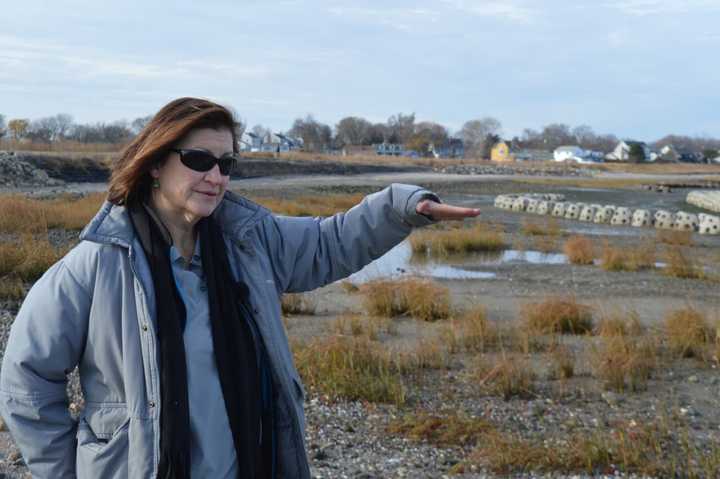Helped by a team of engineers, volunteers and her own students, Jennifer Mattei has placed nearly 400 reef balls weighing 1,500 pounds each at Stratford Point, the cornerstone of her 6-year-old project, which is already showing signs of success along the deeply eroded coast.
“Low tide now is where high tide was in 1990,” Mattei said, scanning the horizon Tuesday morning. “Global climate change is real.”
Beginning in 2010, Mattei partnered with Audubon Connecticut and the DuPont Co., which owns the strip near the Audubon site, to install Connecticut’s first “living shoreline.” It’s hoped the project will restore coastal habitats and maintain their resiliency and function in the face of glaring erosion.
In 2014, Mattei oversaw a pilot project to place 64 cement reef balls, usually used in coral reef restoration, along a stretch of beach to see whether they would help reduce the force of waves crashing on the shore in storms.
In just two years, sand deposits rose 12 inches both behind and, in some areas, in front of the manmade reef, she said.
Recently, Mattei and her team calculated ways to expand the reef, adding another 325 balls that will accumulate sediment and help add to the reef. It’s hoped the expanded space — and the 4,000 grass plugs and shrubs and trees her team will plant — will make the area more hospitable to fish, shellfish, birds and the 50 species of beneficial butterflies and moths who once called the area home.
“We’re mimicking what used to be here,” she said. “If you want biodiversity … you need structure.”
The early success meant a need for expansion and new revenue. The project team used a $91,000 grant from the Connecticut Institute for Resilience and Climate Adaptation to buy the new reef balls. Another $250,000 from Audubon Connecticut’s In-Lieu Fee Program will help restore the lower and upper marsh habitat, while $115,198 from the National Fish and Wildlife Foundation’s Long Island Sound Futures Fund will restore a “mosaic” of dune/grassland habitats above the upper marsh.
DuPont is providing funds for the installation of the reef and support for maintenance of the site. Audubon CT will provide numerous volunteer hours assisting with the care of the plants and monitoring the use of the new habitats by birds and other wildlife.
“The living shoreline is working beautifully, stopping erosion and allowing sediments to be deposited on the cobble beach,” said Mattei, who has spent 21 years at her Fairfield university. “The marsh grasses are growing in faster and taller than an adjacent area planted at the same time without the protective reef. We are extremely grateful to our partners for their support of this project. Without their generosity, it wouldn’t be possible.”
Click here to follow Daily Voice Stratford and receive free news updates.

